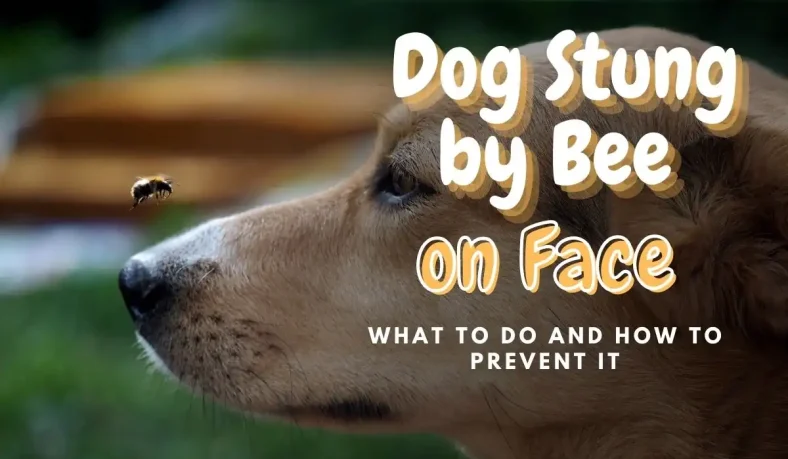Summer is a blast, especially when we get to spend it outside! But just like us, our pet pals need to be aware of the buzzing creatures flying around during this season. If your pup gets stung on the face by a bee, don’t panic – there are steps you can take to make them feel better.
In this article, we’ll show you how to help your furry friend and give you tips on how to prevent bee stings in the first place.
Contents
Symptoms of Dog Bee Stings on Face
Oh no! When your pup is stung by a bee, it’s super important to act fast and recognize all the signs. If you think your furry friend has encountered a bee, look for these common symptoms:
- Swelling of the area that was stung.
- Redness on their skin near the sting; they may yelp due to pain.
- They might start to itch too, but don’t let them – because it could make the swelling even worse.
- Additionally, sometimes allergies can be triggered, which can be really serious – indicators of this are difficulty with breathing, fainting, and extreme swelling.
First Aid Treatment for Dog Bee Stings on Face
If your pup gets stung by a bee on the face, it’s time to take action fast! Here are some steps to help your beloved pooch:
- Removing the Stinger: Gently try using tweezers to remove the stinger if you can spot it. Be careful not to press down too hard on the venom sac, as this could release more of the venom into your pup’s body.
- Cooling the Pained Area: To help minimize swelling and provide some relief from the discomfort, apply a cold compress to the area that was stung.
- Monitoring for Signs of Allergic Reaction: If your pup shows signs of any major allergic reaction, such as difficulty breathing, fainting, or extreme swelling, go to the vet right away.
Comforting Your Dog After a Bee Sting

- Creating a Relaxed and Peaceful Space: Make sure your pup has a tranquil and peaceful environment for relaxation.
- Supplying Snacks and Fun Items: Show your dog some love by giving them tasty treats or entertaining toys to distract from the bee sting.
- Cuddling and Conversation: Giving your dog some cuddles and speaking softly will soothe your pet and help decrease their anxiety.
- Using Natural Solutions: To reduce inflammation and to aid in alleviating discomfort caused by the sting, some people turn to natural remedies such as vinegar.
Prevention of Bee Stings on Dogs
The best way to protect your pup from bee stings is to take precautionary measures. Here are some helpful tips to reduce the chances of bee stings:
- Steer Clear of Flowers and Bushes: When out and about, avoid walking through areas populated with bees and other critters.
- Leash Control: When in the vicinity of stinging insects, make sure to keep your pup on a leash to ensure they don’t get too close.
- Try Insect Repellent: Applying insect repellant to your dog’s fur will help prevent them from coming into contact with bees.
- Gear Up: If spending extended amounts of time outdoors, cover up with long-sleeved clothing and trousers as extra protection against stingers.
- Cover Up Food and Drinks: Ensure that all food and drinks are properly covered when outside to deter bees and other bugs.
To Wrap Up
Don’t let the sting of a bee ruin your summer fun with your pup! With the right first aid treatment and preventive steps, you can keep your canine companion safe from bee stings and out of harm’s way. Always be on the lookout for any signs of an allergic reaction following a sting, and seek professional veterinary care if needed. Get prepared and make this season one to remember with your four-legged bestie!


